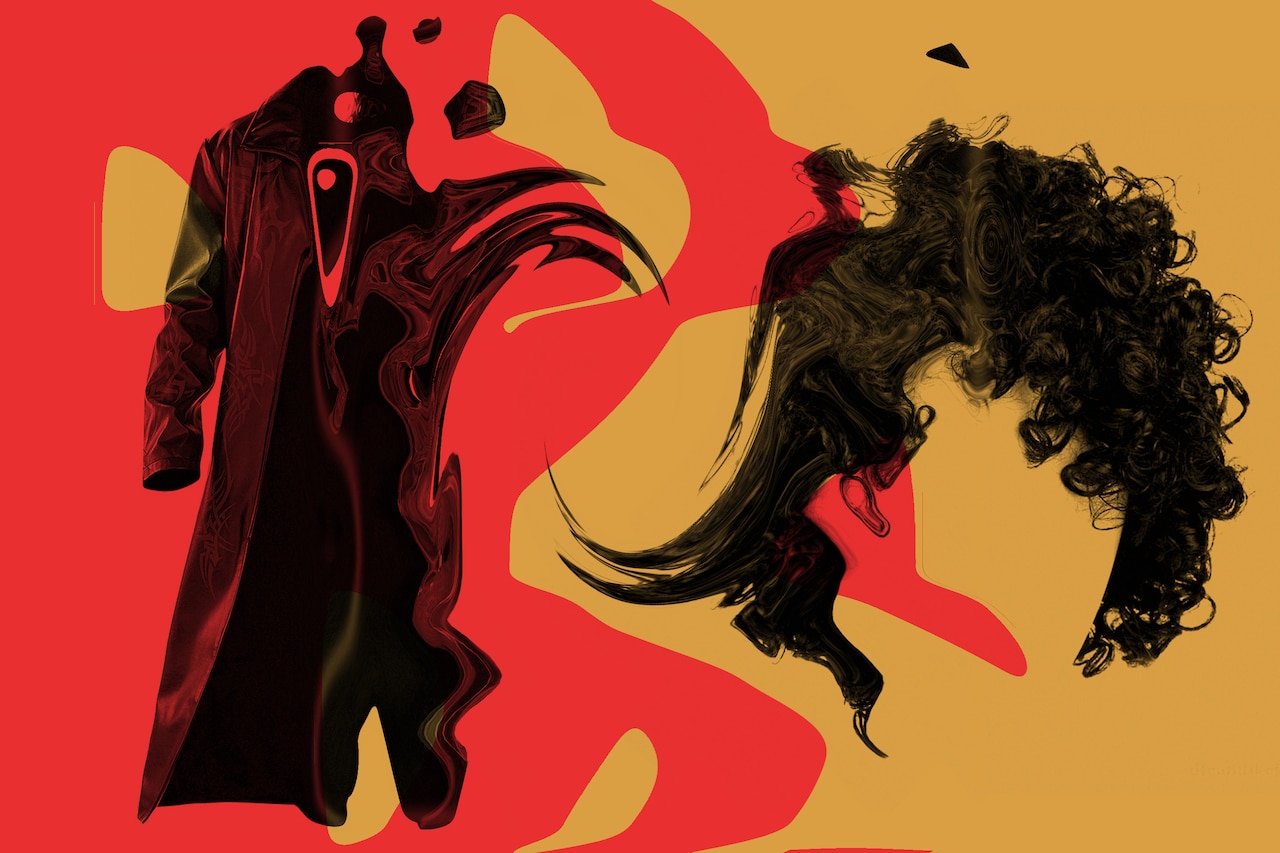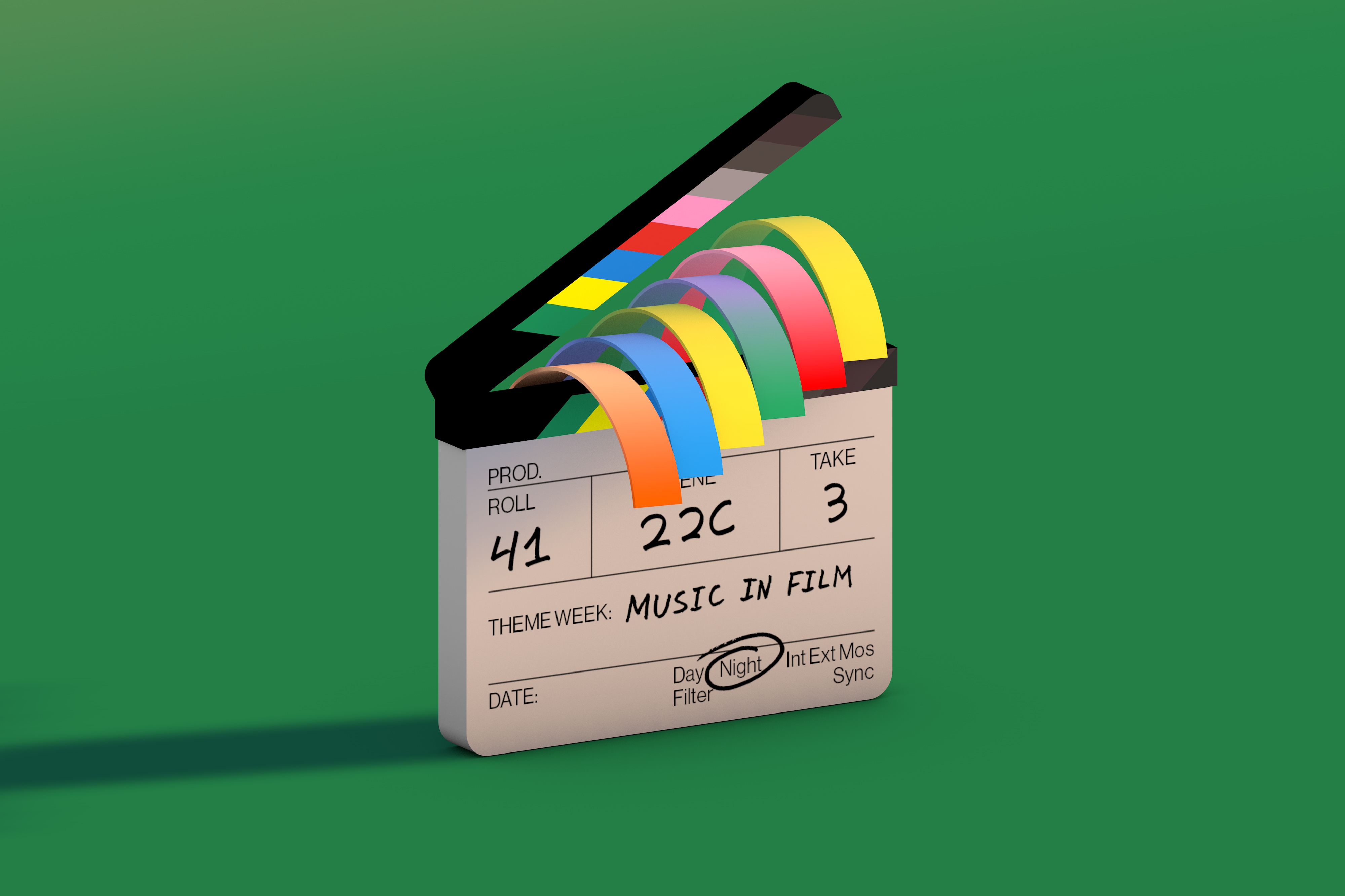Synchedelia: Beyond the Dark Side of the Rainbow
From Pink Floyd and the Wizard of Oz to Travis Scott and SpongeBob SquarePants, Amos Barshad explores the strange and unpredictable world of movie synchs

Like all true folklore, the greatest movie synch in history doesn’t have a point of origin. The greatest movie synch in history is a truism passed down by word of mouth from generation to generation. It’s just, like, a thing people know: If you play Pink Floyd’s 1973 album Dark Side Of The Moon at the same time as 1939’s The Wizard Of Oz (and mix in possibly a few cold beers and perhaps a small dosage of your light drug of choice) then the music and the visuals – well, they synch.
We don’t know who thought to try it first. We don’t know why on earth they thought to do so. But we do know who first brought it to the attention of the mainstream. Charlie Savage is now a national-security reporter for the New York Times specializing, as he puts it, in “surveillance, torture, indefinite detention and the like.” In the mid-’90s, though, he was a Pink Floyd obsessive and a college intern at the Fort Wayne Journal Gazette. One day, on the Usenet board alt.music.pink-floyd, he came across a loose description of the synch; as he recalls, it was just someone “saying vaguely they had heard about it from some people in Los Angeles.” He tried it himself, on his dorm-mate’s tiny television, then pitched it to the editor for the Gazette’s then extant “Gen-X oriented” features page, “next.”
It was a humble moment, with reverberations. The short piece delineated the synch’s peculiar moments of matched-transitions and of song lyrics describing actions. (“The line ‘no one told you when to run’ from ‘Time’ is sung just as the scene switches to Dorothy running away from home to save Toto.”) It also helped establish the band’s disavowal of knowledge of the whole thing. As Savage wrote, “Several calls and a faxed request to a Pink Floyd publicist at Columbia Records were unanswered.” Far from cutting the synch’s lore off at the pass, though, the band’s rejection of the strange creation only gifted it an air of intrigue.
“Dark Side Of The Rainbow,” as it’s now widely termed, became totemic. And it birthed children. In the late-early days of the internet, the late ’90s into the early 2000s, the concept of the movie synch mutated forward. On eyesore message boards and lovingly handmade websites like Synchronicity Arkive and angelfire.com/musicals/cinesynchs, word of mouth again took over, and a community blossomed to traffick and trade in movie synchs. They shared them gleefully. They went out and they created their own. Who were these people? What was it that they were looking for in the synchedelia?
Synching makes you the active creator of your own experience. It pulls the audience into the role of equal with the original creators.
You will perhaps not be surprised to hear that the synchers were mostly young men, mostly of a geekier persuasion. Naturally, they were attracted to sci-fi and fantasy, plus any kind of complicated popular music. They experimented, then shared their best results: Radiohead’s OK Computer was paired with Terry Gilliam’s 12 Monkeys (as “12 Computers”) and with The Return Of The Jedi (as “OK Jedi.”) The Flaming Lips’ Yoshimi Battles The Pink Robots was synched with Terminator 2: Judgment Day to become “Yoshimi Battles The Terminator Too.”
Some claims were people happily taking the piss. Staind’s Break The Cycle pairs with Ashton Kutcher’s time-warper The Butterfly Effect? Julie Taymor’s experimental Shakespeare reinvention Titus goes quite nicely with the soundtrack to The Wedding Singer? Dark Side Of The Moon actually synchs perfectly with Paul Blart: Mall Cop, too?
Others were so overwrought that they have to be sincere, and are all the more glorious for it. Take second-rate Neo and add the Mars Volta’s belovedly thorny debut and, apparently, you get “The Matrix: Re-Loaded In The Comatorium.”
Michael Johnston is the former proprietor of Synchronicity Arkive. At its peak, in the early 2000s, the Arkive “brought a lot of people together,” Johnston says. “The site was going nuts and I was struggling to keep up with all of the things people were sending me. That message board was so active that it actually filled up my internet account at the time and crashed my ISP.”
Johnston got hooked after a buddy showed him a micro-synch of the end of 2001: A Space Odyssey with Pink Floyd’s “Echoes.” “If you do the synch right,” he says, “there’s a moment in the Star Gate sequence, in the more abstract section, where everything looks almost computer graphical, and there’s a spiraling of color that happens right on a transition in the song. It’s truly epic. That was my whoa moment.”
Inspired equally by collage art and the cut-up technique of William Burroughs, Johnston experimented. “Searching for a good synch is no different than any other creative activity,” he says. “You just make use of the things you find around you. It comes down to curiosity and wonder. And one of the best lessons of synching is that you are never a static observer of media. Synching gets you out of the passive role so much of media tries to put us into. It makes you the active creator of your own experience. It pulls the audience into the role of equal with the original creators. Or, at least peer!”
Andrew C. Wendland runs MovieSyncs.com, which lists loads of synchs utilizing the music of bands like Jethro Tull and Oasis (#6: “Standing on the Shoulder of Giants (2000) with Independence Day (1996)” and Metallica. In conversation, he happily plays the prescribed role of conspiracy theorist. Referencing “Dark Side Of The Rainbow” (which he prefers to refer to by the abbreviation “DSotM/TWoO”), he ticks off what he considers oodles of clues proving the band’s secret, never-expressed intent. In one email, he writes:
“Side B of Dark Side Of The Moon, the songs in reverse order are:
Eclipse
Brain Damage
Any Colour You Like
Us and Them
Money
The author that inspired The Wizard Of Oz was L. Frank Baum. They memorialized his last name in the song titles.”
Of the connections discovered by what he calls “synch researchers,” Wendland says, “I personally believe that the musicians are crafting their albums to intentionally connect to these films.” Then he adds, “I’m definitely in the minority regarding this theory.”
It’s the antithesis of the conspiracy theory as something dark and foreboding. This is conspiracy theory as pure, harmless goodness. As for the practice itself, Wendland says, “It gives me a rush to crack a synch. It gives me joy. [But] I really think the best way to understand this phenomenon is to try some synchs yourself. It’s just too difficult to describe in words.”

To the nonbelievers, this all might seem more than a bit silly. Proof of point: There’s more than one term describing, while implicitly bashing, this sort of thing. Like apophenia, Klaus Conrad’s phrase for seeing meaningful connections in nothing. Or pareidolia, peoples’ predilection to seeing palpable hidden images, like, say, the face of the Virgin Mary in a grilled cheese sandwich. (This was an actual event, from 2004. According to the BBC, an online casino company, Goldenpalace.com, purchased it and promised to “take the sandwich on world tour.”)
But there’s quasi-academic language propping up the validity of the synchs, too. As Savage, the incidental fueler of a lot of this, told me, “I prefer the term ‘synchronicity,’ after Carl Jung’s concept of events that seem to be meaningfully related even though they have no causal link.” Describing the concept, Jung wrote “Synchronicity… consists of two factors: a) An unconscious image comes into consciousness either directly (i.e., literally) or indirectly (symbolized or suggested) in the form of a dream, idea, or premonition. b) An objective situation coincides with this content. The one is as puzzling as the other.”
Adds Savage, “I think that when the brain notices coincidences that seem to have meaning despite a lack of any obvious explanation or cause, it produces a feeling of uncanny wonder.”
I know what he means, and I know what Johnston and Wendland and their ilk mean, too. I’ve never made a synch. But I do know the feeling when two things feel, wonderfully, linked. It comes up for me most regularly when a rapper finds communion with a beat – when the words being said no longer matter because the flow and the music have commingled. One of my all time favorites is Raekwon’s first few bars on the forgotten, hushed late-era Wu Tang banger, “Take It Back.” More recently, on his buddy Playboi Carti’s “Shoota,” Lil Uzi Vert gave me the same thrill. “Now it’s myyy tiiime,” Uzi warbles, as drumless schizophrenic synths swell.
And I fondly remember one rare moment of synched real-life, too. Once, riding my bike in New York on a late summer afternoon, I happened to get to the upsurge of Foals’ “Spanish Sahara” in my headphones right as I hit the crest of the Manhattan Bridge, right as I looked over onto that day’s atypically beautiful East River. I don’t know what to tell you: The music just felt tailormade for the moment. Technically speaking, it’s a nothing thing. But, truly, I have never forgotten it.
I could try and chase moments like these, but that would be pointless. Their wonder is in their suddenness, and in their naturalness. It has to be out of our control. Because who doesn’t want to be convinced that there are hidden forces making sense of our chaos?
These days, synchers say, the online presence is smaller than ever. There are some live sites, but many once active now redirect to error pages. It was a natural thing, the shrinking. There were glory days of synch researchers seeking and creating. Those glory days are gone. Leighton Jones, who was once a prolific creator of syncs on his site Alternative Synchs, said of the community, “To be honest, I don’t know if it still exists. If it does I am not part of it.”
And are kids even still getting high and doing a “Dark Side Of The Rainbow”? I don’t know. I hope so. If they do, I think they might enjoy the experience.
Recently, the Twitter user @AnthonyTrucco did go viral with a particularly modern internet culture synch: the beloved “Bubble Bowl” performance from SpongeBob SquarePants over Travis Scott and Drake’s mega-jam “Sicko Mode.” Trucco didn’t call it a synch; he just wrote, “Somebody please tell me why this works so well.” But there it was, plain as you like. A fish brass band smashing the horns. SpongeBob, mic in hand, letting it rip: “Sun is down! Freezing cold!” A small string of perfect moments.
I asked Johnston, the man behind Synchronicity Arkive, to describe, if he could, what it feels like when a synch he’s labored on suddenly comes together – suddenly clicks into existence. He told me, simply enough: “I’ve always thought of that as feeling the underlying connection between everything.”

